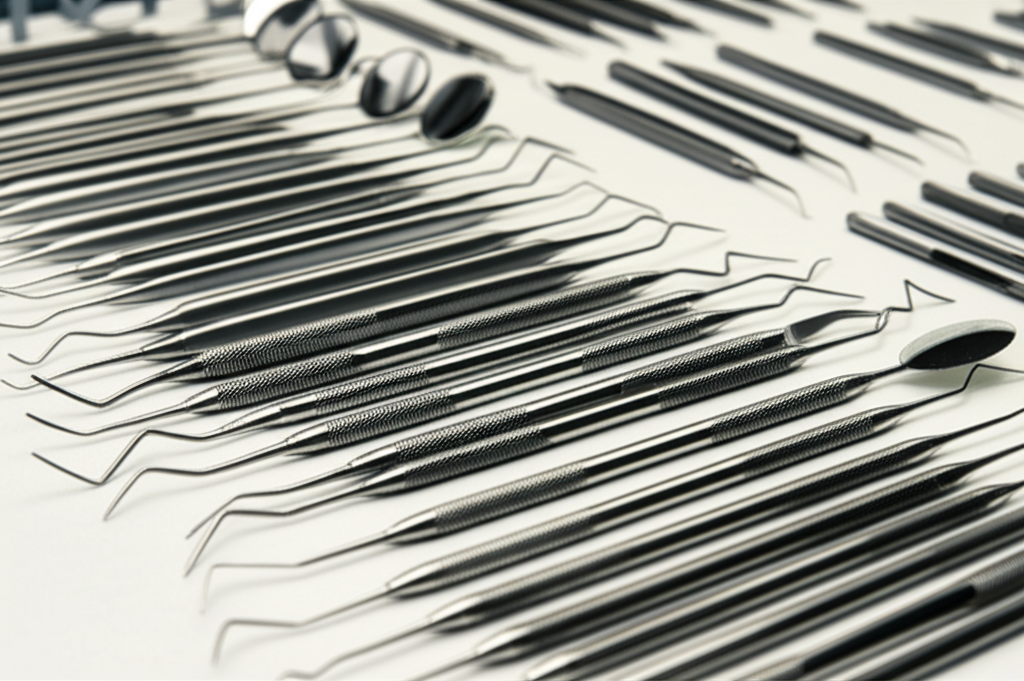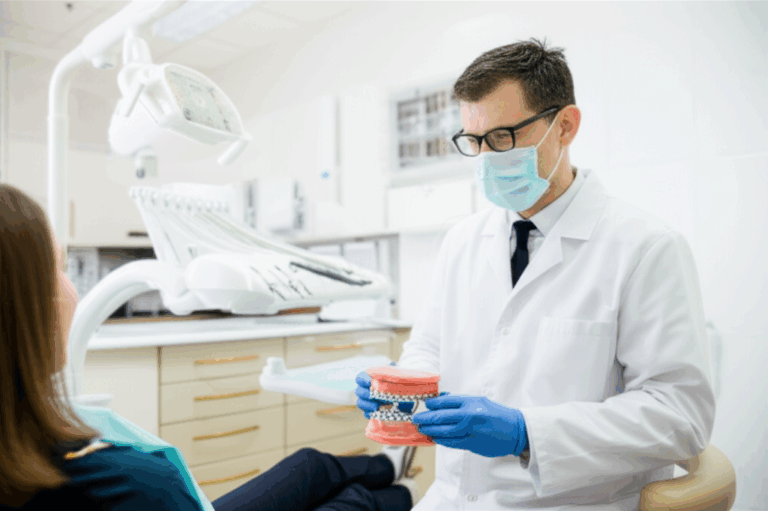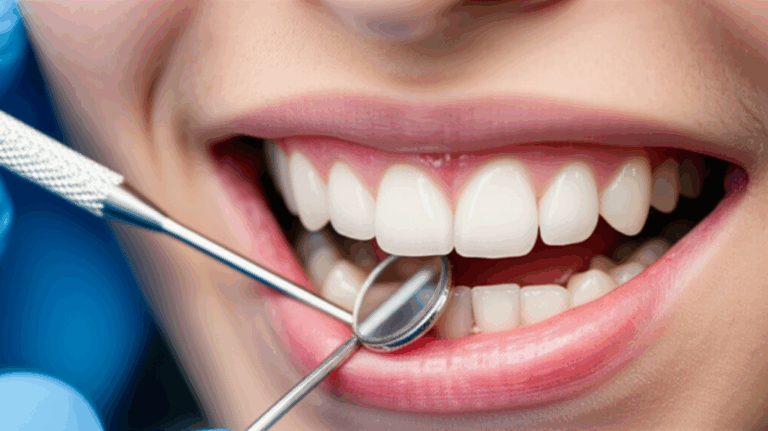
How Many Dentists Are in the US? [Current Statistics & Future Outlook]
That Question on Your Mind—And Why It Matters
You probably typed, “How many dentists are in the US?” because you’re curious about your own care—or maybe you just like interesting facts. No matter your reason, it’s a good question. After all, knowing how many dentists are out there doesn’t just satisfy your curiosity; it says a lot about how easy it is to get dental care, job trends, and even what your own future dental visits might be like. Is the US keeping up with the need for dental care? Are some states full of dentists while others don’t have enough?
Let’s take a closer look and see what these numbers really mean—without complicated words or confusing talk.
In This Article
- The Big Picture: How Many Dentists Are in the US?
- What’s Behind the Numbers? (What Counts As a “Dentist”?)
- Where Are Dentists Most—and Least—Common?
- Dentists and Specialists: Who Does What in Dentistry?
- Who’s Joining (or Leaving) the Dental Workforce?
- What Does the Future Hold for US Dentistry?
- The Healthy Takeaway: What All This Means for You
The Big Picture: How Many Dentists Are in the US?
Here’s the main answer you came for:
There are now about 203,700 working dentists in the United States, according to the latest numbers from the American Dental Association and the Bureau of Labor Statistics. That’s about 61 dentists for every 100,000 people.
You can think of it like a big group of dentists—almost enough to fill a city like Salt Lake City, Utah—spread across offices, hospitals, clinics, and even the army. Sounds like a lot, right? But how these dentists are spread out, what kind of work they do, and how quickly the profession is changing all affect how easy it is for people to see a dentist.
Where does this number come from?
These numbers come from trusted groups like the ADA and BLS. They gather info on how many dentists are licensed, working, and available in different states and dental specialties.
But, as with any good detective story, not all data is the same. Some numbers only count dentists who are seeing patients, while others might include teachers, those who do research, or even people who have retired but still keep their license.
What’s Behind the Numbers? (What Counts As a “Dentist”?)
If you ask people to picture a dentist, most will see someone in a white coat and mask, getting ready to fix a tooth. But what makes someone a “dentist” isn’t always simple. Here’s what to know:
The Many Hats a Dentist Wears
- Active Practicing Dentists: These are dental workers who actually see patients for checkups, fillings, and other care. The ADA’s number of ~203,700 is for this group.
- Licensed (But Not Actively Practicing) Dentists: Some dentists still have their license, but don’t see patients—maybe they teach, do research, or have retired.
- General Dentists vs. Specialists: Are we talking about anyone with a DDS or DMD (those are dental degrees) or just the ones focused on regular care? Specialists take on tricky cases and are about 20% of all dentists.
Why the Numbers Sometimes Vary
Think of counting dentists like counting apples on a tree: some are ready to eat (active dentists), some are still growing (dental students), and some are on the ground but still around (retired or non-working dentists). Most reports try to count only the ready ones—dentists you can actually visit.
Bottom Line:
When you hear stats about the “number of dentists,” check if they mean just the ones working with patients or also include teachers, researchers, and others.
Where Are Dentists Most—and Least—Common?
State-by-State: A Patchwork Quilt
The US is a big country, and we don’t have the same number of dentists everywhere. Some places, especially big cities or states with dental schools, have lots of dentists. Rural areas? Not so much.
States With the Most Dentists
- California is way ahead, thanks to its big population and several dental schools.
- New York, Texas, Florida, and Pennsylvania also have lots of dentists.
States With the Fewest Dentists
- Vermont, Wyoming, and Alaska usually have the fewest, because not many people live there.
But don’t just look at total numbers. What’s really important is the dentist-to-population ratio. A small state might have enough dentists for their people, while a big state might have shortages in country or city areas.
Rural vs. Urban: The Great Divide
If you live in a city, finding a dentist is probably pretty easy. But in many small towns, there are “dental deserts”—places where it’s hard to find care. According to the Health Resources and Services Administration (HRSA), more than 62.9 million Americans live in areas that don’t have enough dentists. There are almost 6,000 of these shortage areas in the US as of early 2024.
Why Does This Happen?
- How Many People Live There: Dentists like to work where there are lots of patients.
- Money: Some areas don’t make enough money to support a dental office.
- Education and Support: Rural places may not have good training centers or enough dental helpers.
If you’re in one of these places, there are programs trying to get more dentists out to you. The government even gives loan help and other rewards to dentists who work in these areas.
Quick Fact:
The average dentist-to-patient ratio in the US is about 1:1,640, but in some small towns, one dentist might have to take care of over 5,000 people!
Dentists and Specialists: Who Does What in Dentistry?
Not every dentist does the same work. You can think of general dentists like family doctors for your teeth. Specialists, though, are like heart doctors or skin doctors—they’re the experts for certain problems.
General Dentists: Your Main Smile Guardian
- Make up about 80% of all dentists
- Take care of everyday dental work (cleanings, fillings, simple tooth removal)
- Teach you how to keep your mouth healthy and send you to a specialist if you need one
Dental Specialists: The Smaller Group
Specialists are about 20% of the dentists in the US. They do jobs like:
- Orthodontists: Fix crooked teeth and bite problems (like braces or aligners)
- Oral and Maxillofacial Surgeons: Work on the mouth, jaw, and face (hard tooth removals, jaw surgery, implants)
- Pediatric Dentists: Help kids and teens get used to going to the dentist
- Endodontists: Fix the inside of teeth (like root canals)
- Periodontists: Take care of gums and the stuff that holds teeth in place
- Prosthodontists: Replace missing teeth (crowns, bridges, dentures, or full mouth rebuilds)
Why Does Specialization Matter?
Having specialists means people can get good help for tough problems. If you need a hard tooth pulled or a special fix for a child, seeing the right expert makes a big difference. Modern dental ceramics labs and digital dental labs help specialists by making custom replacements, aligners, and other important dental pieces.
Who’s Joining (or Leaving) the Dental Workforce?
Dentistry is changing a lot. Who today’s dentists are, and how the job is changing, tells us a lot about how easy it is to get care, and what the future might be like.
How Old Are Dentists?
The average dentist in the US is just over 50 years old. So, lots are getting close to retirement, while new dentists are finishing school every year (about 6,600 new dentists graduate each year).
What Does This Mean?
- Many dentists will retire in the next 10 years.
- At the same time, more students—especially from different backgrounds—are becoming dentists.
More Diversity in Dentistry
There are more women and people from different ethnic groups in dentistry than ever. Women now make up about 36% of dentists (double what it was in the 1990s). This helps because people often feel better seeing a dentist who understands them.
Changing Ways of Working
Owning a dental office isn’t the only goal anymore. Now, lots of dentists—especially new ones—work in group practices or with Dental Service Organizations (DSOs) that handle business stuff like hiring, billing, or buying new tech. There are more digital dental labs now, making dental work quicker and more accurate using computers.
What Does the Future Hold for US Dentistry?
Will There Be Enough Dentists?
The US Bureau of Labor Statistics says there will be about 4% more dentist jobs over the next 10 years, a little faster than the average job. That means about 6,300 new jobs by 2032.
But just having more dentists isn’t the whole story. What matters is where they choose to work and what special kinds of care they provide.
What Affects Growth?
- More People & Older People: A growing, aging population means more patients who may need more advanced care.
- Changing Care Needs: People want more cosmetic and restorative dental work than before (which means more jobs for crown and bridge lab and implant specialists).
- Dental School Enrollment: Staying steady or rising keeps the number of new dentists up.
- Retiring Dentists: As older dentists quit, new dentists need to fill those roles—and then some.
Fixing Dentist Shortages
The government and states are working to bring more dentists to places where they’re needed. They offer rewards like paying off student loans and giving extra money to dentists who work in these areas.
New Tech in Dentistry
Ever heard of teledentistry? It means you can meet your dentist by video call for advice. Other smart technology uses computers and 3D printers to make dentist work easier, faster, and more comfortable—especially in places far away from big cities. Labs like 3d dental labs help make this possible.
The Healthy Takeaway: What All This Means for You
Let’s wrap it up. Here are the key points for your daily life:
Key Facts—Fast
- About 203,700 dentists work in the US.
- Around 80% are general dentists; 20% are specialists.
- Big states (California, New York, Texas, Florida, Pennsylvania) have more dentists than others.
- Over 62 million Americans still live in places where it’s hard to find dental care.
- The dental workforce is getting more diverse—and a bit younger, as new dentists join every year.
- Dentistry is growing. Not every place is sharing in the growth, though.
What Can You Do With This Information?
Even if you live somewhere with few dentists, teledentistry and community health programs are making it easier to get help. Check with your local health department or federally qualified health center.
The sooner you fix a problem, the simpler and cheaper it is. Brushing, flossing, and regular visits are still the best advice.
Whether you want whitening, braces, or a full-mouth fix, there’s a dentist or specialist for you. Need help? Check our dental practical guide to see what different treatments involve.
If you feel better with a dentist who speaks your language or comes from your background, you have more options than ever. Look for someone you feel comfortable with.
If you’re unsure, ask your dental team about their training, services, and how they can help you. Knowing more helps you get the care you want.
Frequently Asked Questions
How do I know if my area has enough dentists?
Start with your local health department or check the HRSA site for places that don’t have enough dentists (Dental Health Professional Shortage Areas, or DHPSAs). Long wait times or having to travel far are signs there aren’t enough dentists nearby.
Do most dentists own their own practice?
That’s changing. While many dentists still have their own offices, more—especially new ones—are joining group offices or DSOs that take care of business so they can focus on patients.
Are dentists in shortage areas less qualified?
No. Dentists who work in places with shortages often care a lot about their community and may have lots of experience treating many kinds of patients.
How is technology changing dental care?
Smart tools like digital scanning, computer-based design, and teledentistry make dental work faster, more accurate, and less painful than before.
In Closing: You’re the Point of All These Numbers
The dental workforce in America isn’t just a number—it’s thousands of people working to keep your teeth healthy and pain-free. No matter where you live, there are ways to get help for your mouth.
Not sure where to start? Try booking a checkup, reading our patient dental resources, or just brushing and flossing one extra minute tonight. Every good habit (and every question you ask) brings you closer to a lifelong healthy smile.
Keep smiling—and keep asking questions. A healthier, happier smile is not far away.
Sources:
- American Dental Association Health Policy Institute
- US Bureau of Labor Statistics Occupational Outlook Handbook
- Health Resources and Services Administration (HRSA)
(Medically checked for honesty and clarity.)








